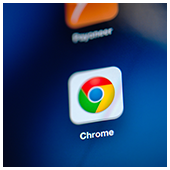
The current state of HTML5
HTML5 first hit the market in 2008 as a modification to its 4.0 version, adding a few changes and fixing bugs (as happens with most newer versions of programs). But it also promised to change the way developers design webpages and influence how browsers search for and view online information.
Most websites currently utilize a Flash-based display protocol, which is often slow and uses significantly more resources than HTML5 to accomplish the same tasks. By changing to an HTML5 default and requesting permission to use Flash, users have the advantage of faster load times and a more efficient browsing experience.
The Use of Adobe Flash
One benefit of using Flash for developers is purely aesthetic: Flash makes the website look good because the designs, colors and motion on the page are generally more eye pleasing. Unfortunately, the disadvantages far outweigh the advantages. Using Flash on a commercial website means slower performance, confusing navigation schemes, incompatibility with web analytics software, and limited visibility in some formats.
Google's Plan to Phase Out Flash
Google Chrome users should begin to notice a change in how they browse websites starting this month, December 2016. Only 1% of Chrome users (and a handful of users using the beta browser) will be asked whether they wish to run Flash as they go about their Christmas shopping.
In January 2017, Google’s proprietary browser will begin asking users whether they wish to use Flash whenever they visit a new website. In February 2017, with the release of the newest iteration of the Chrome browser, users will be asked before Flash components run on a page. Finally, by October 2017 all sites will load using HTML5 by default and require users to physically enable the Adobe Flash to experience anything delivered in that medium.
Developers at Chrome hope that by stretching out the introduction of HTML5 default settings, web designers will have time to adjust their strategies away from Flash and toward a more user-friendly design strategy.
Moving away from a Flash-based web experience will have gigantic implications for anyone who manages a website. Regardless of whether you built your site or outsourced its creation, it’s most likely going to need some serious restructuring in the coming years. Get in touch with us to get a head start on this project -- the sooner the better.

You must be logged in to post a comment.